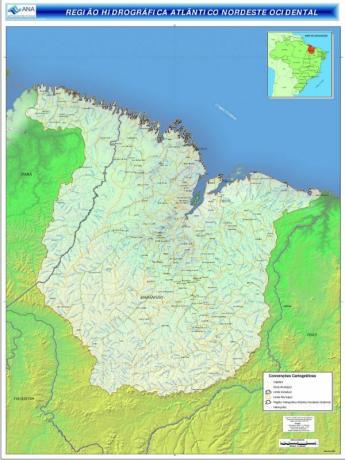
A West Northeast Atlantic Watershed. It is located in the northeast and north regions of the country and is one of the 12 hydrographic regions of Brazil.
It occupies a large part of Maranhão, about 91% of the basin's area, and a small portion of the northern region of the country, in the east of the state of Pará, which totals about 9% of its area.
see more
Discover 8 types of food that are banned worldwide and understand…
Infallible: eliminate grease stains from washed clothes with this…
the basin West Northeast Atlantic hydrographic basin is formed by sub-basins, among which the main ones are: Gurupi Basin, Pericumã Basin, Itapecuru Basin, Mearim Basin, Munim Basin and Turiaçu Basin. The main aquifers in the region are Itapecuru, Motuca and Corda.

The basin occupies an area of approximately 268,000 km², which corresponds to about 3% of the national territory.
It comprises the Amazon, Cerrado and Caatinga biomes in the region. It is located in the intertropical or intertropical region that has a hot and humid climate, with an average annual temperature of 27° C and low temperature range.
According to a survey by the IBGE (Brazilian Institute of Geography and Statistics), the basin West Northeast Atlantic hydrographic 223 municipalities: São Luís and medium-sized cities such as Balsas, Imperatriz, Bacabal, Caxias, Barra do Corda, Santa Inês, Codó and Coroatá.
Furthermore, the basin has great socioeconomic importance for about 6 million population who live locally.
The urban use of water is preponderant, as well as the use for agriculture, livestock, mineral extraction and fishing.
A unrestrained exploitation of the basin due to the expansion of urbanization, deforestation, pollution of the rivers and predatory fishing, has caused the silting up of rivers, degradation of fauna and flora and erosion.
These environmental problems directly affect the availability of potable water for use by people who depend on the rivers that form the basin.
The Western Northeast Atlantic Watershed is made up of the main rivers:
(Sources: National Water Agency (ANA), Brazil Water Project, Toda Matéria)
